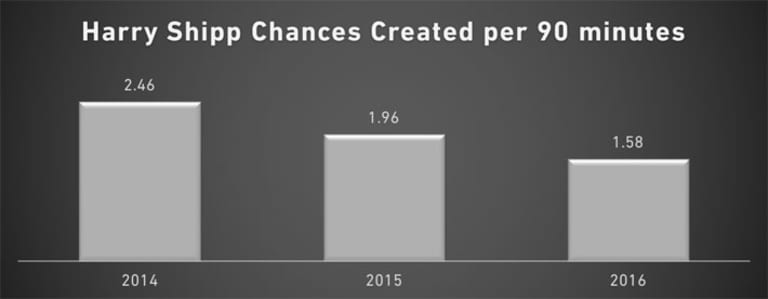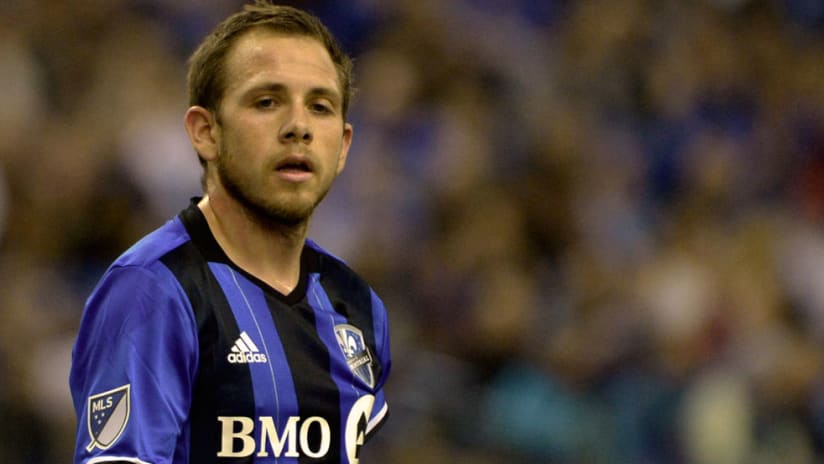After a promising start to his MLS career, Harry Shipp is on his way to his third team in three seasons.
The former Notre Dame standout was traded from the Montreal Impact to the Seattle Sounders on Thursday in exchange for general allocation money.
Shipp started his career as a Chicago Fire Homegrown Player in 2014, racking up seven goals and six assists on his way to finishing 2nd in MLS Rookie of the Year voting. He followed that up with three goals and eight assists in 2015 but with a regime change in Chicago, Shipp was traded to Montreal.
With the Impact this season, Shipp seemed out of place on a team that was focused on counterattacking soccer. The midfielder is not known for his athleticism and speed, which hindered his ability to be effective in Mauro Biello’s system. Shipp set career lows in games played, games started, goals and assists with the Impact and played just 18 minutes in the team’s run to the Eastern Conference Championship.
What set Shipp apart with the Fire was his ability to create chances. In 2014, Shipp averaged 2.46 chances created per 90 minutes, good for the 12th highest rate in MLS that season. In 2015 that rate dropped to 1.96 chances created per 90 and with the Impact it fell all the way to 1.58.

That kind of drop-off can be somewhat explained by the Impact’s style, as they finished with the third-lowest rate of possession in MLS. In a more possession-based scheme, Shipp could bounce back to be one of the best creators in MLS again.
In Seattle, Shipp is joining a team that did not possess the ball at an elite rate. After Nicolas Lodeiro’s arrival the Sounders averaged 51.1 percent possession (including playoffs), which was the eighth-highest rate in the league.
It is unknown what kind of style Brian Schmetzer will choose to employ in his first full season in charge, but it’s safe to say it will be reliant on the skills of Lodeiro.
The Uruguayan international was the best chance creator in MLS after the All-Star Game and it is likely he will be able to replicate that level of play in 2017. This means that Shipp will have to find a place to fit in around the skills of Lodeiro.
The most obvious solution is in the spot Erik Friberg occupied toward the end of the Sounders’ run to MLS Cup. With Lodeiro nominally deployed on the right – though he had plenty of freedom to work centrally – Friberg was deployed as a third central midfielder in front of Osvaldo Alonso and Cristian Roldan. In this position Friberg was asked to complete passes at a high rate and be a focal point of Seattle’s defensive shape.
He accomplished those tasks, completing 85.3 percent of his passes in 2016 including the playoffs and averaging more than 3 tackles and interceptions per 90 minutes. Despite this, the Swede’s option was declined following the season.
Can Shipp do the same job under Schwetzer? He averaged 2.5 tackles and interceptions per 90 minutes in 2016 – the highest rate in his MLS career – but is generally not known for breaking up opposing attacks. He has also never completed more than 80 percent of his passes, which could change in a different set-up in Seattle.
Shipp could be an exceptional secondary chance creator for Seattle, assuming he does enough in link-up play and on the defensive end to warrant a starting spot. Or he could be seen as a luxury player who is mainly used as a spark off the bench and a back-up to Lodeiro.
Schmetzer’s ability to tailor to Shipp’s strengths will likely answer the question of whether or not the 25-year-old is a success in the Pacific Northwest.













